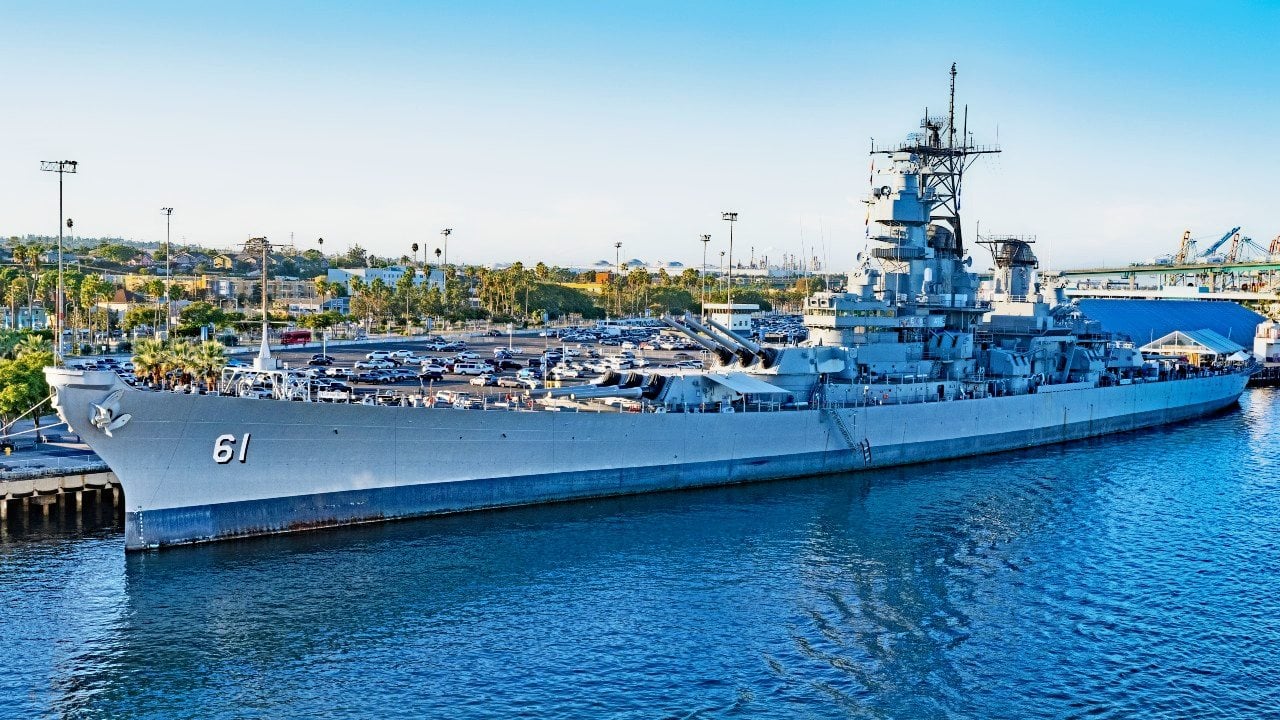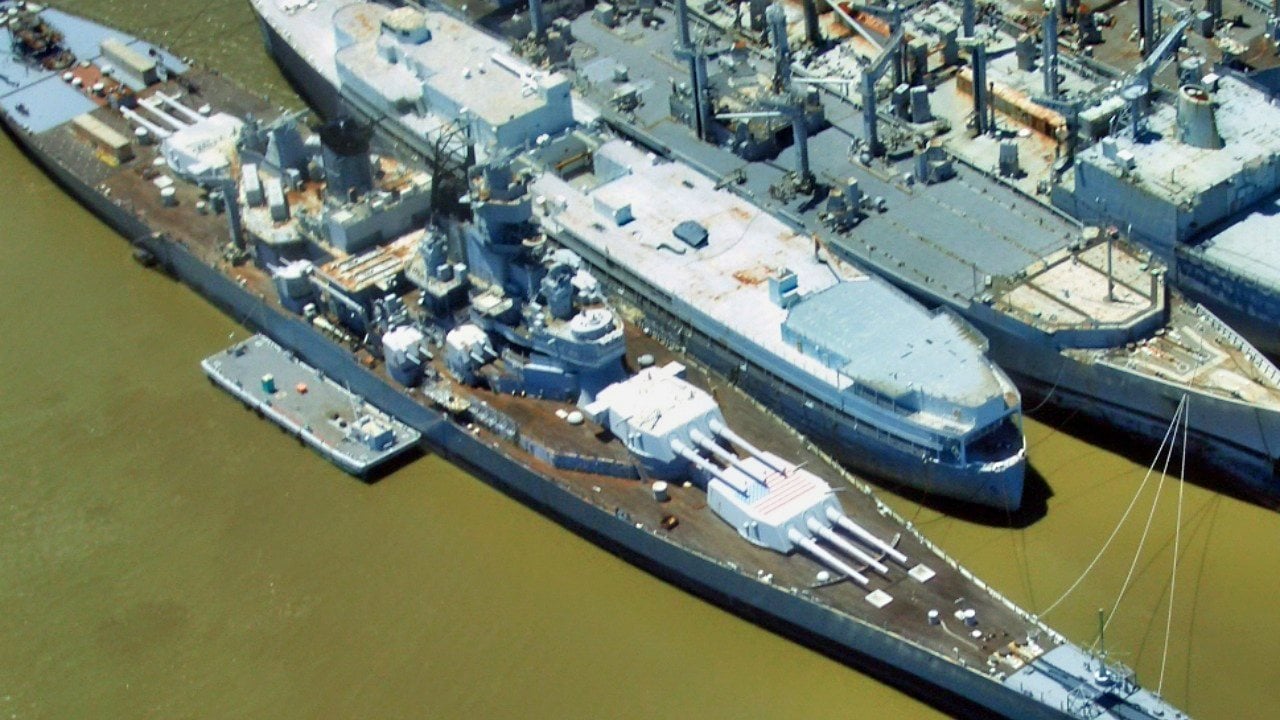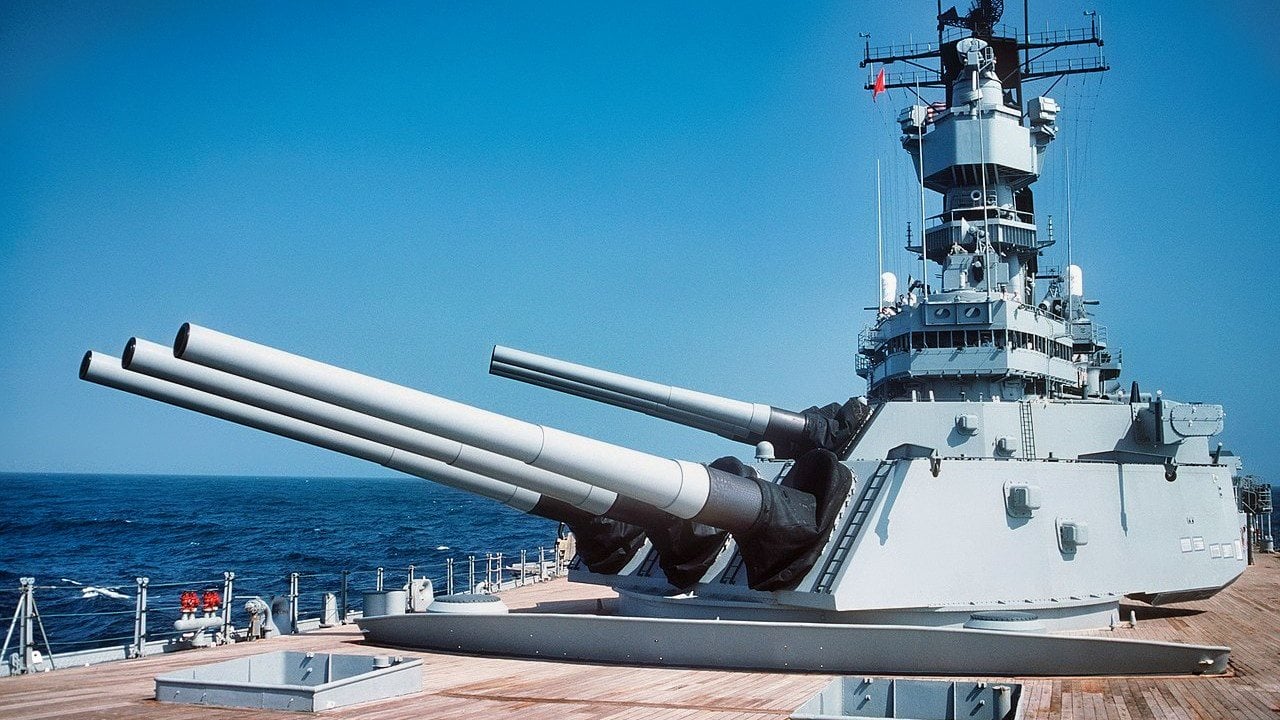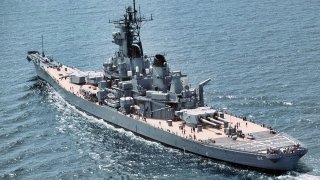Russia's Kirov-Class Battlecruisers Brought Navy Battleships 'Back from the Grave'
The Iowa-class battleships were reactivated in the 1980s to counter the growing Soviet naval threat, particularly the Kirov-class battlecruisers.
What You Need to Know: The Iowa-class battleships were reactivated in the 1980s to counter the growing Soviet naval threat, particularly the Kirov-class battlecruisers.

-These fast battleships, initially designed to escort aircraft carriers and engage enemy capital ships, were refitted with modern electronics and armed with Tomahawk cruise missiles and Harpoon anti-ship missiles, enhancing their relevance during the Cold War.
-Reactivating the Iowas was a cost-effective response to the Soviet Navy's expansion compared to building new ships.
-However, with the collapse of the Soviet Union and advancements in naval technology, the Iowas became obsolete and were retired in the early 1990s.
Why the U.S. Reactivated Its Iowa-Class Battleships in the 1980s
Before the aircraft carrier became the most powerful ship afloat, hulking battleships ruled the waves. The last U.S. battleships, the Iowa class, were built for the Second World War and saw sporadic service in the decades that followed. Somewhat incredibly, they were retired for the final time in the early 1990s following a reactivation in the early 1980s.
Their return to service was hard-fought and is often questioned, but why did the Reagan administration push so hard to reactivate the Iowas?
Typically cited is their ability to handle the Soviet Kirov-class battlecruisers that were first launched in the early 1980s. Their role as Naval Surface Fire Support (NSFS) vessels also played a part in their return to service. Additionally, refitting and crewing the four Iowas was deemed more cost-effective than ramping up production of new ships – Congress and the U.S. Navy at the time assessed they would get more bang for their buck by activating the old battleships in their effort to match the Soviet Navy’s growth.
The Iowas’ History
The Iowa class was designed as a fast battleship to escort aircraft carriers and bring fast enemy capital ships to battle. Six were initially ordered in 1939, but only four were completed before the end of the Second World War.
All four warships saw extensive service in the 1940s and 1950s in the Second World War and the Korean War. They were decommissioned in the late ‘50s, as they were costly to maintain and required a much larger crew than newer vessels. USS New Jersey was reactivated to serve in the NSFS role in Vietnam but only sortied once before being retired.

How the Soviets’ Capabilities Compared
The late 1970s saw a major Soviet military buildup in Eastern Europe. The Soviet Navy also undertook a modernization and expansion program, adding several new classes of vessels with brand new technologies and armaments.
One ship in particular, the Kirov-class battlecruiser, worried Western planners and analysts. A nuclear-powered ship, she was capable of staying at sea for as long as she remained provisioned. The cruiser carried an impressive armament, including twenty P-700 Shipwreck anti-ship missiles. These missiles have an estimated range of over 300 miles and were a major concern for U.S. carrier strike groups. The Kirovs’ impressive anti-air armament of 96 S-300 SAM missiles made them hard targets for the Carrier Air Wing.
A Quick and Cheaper Alternative
To counter the growing Soviet threat, the Reagan administration conducted a force build-up across the U.S. service branches. When it came to the Navy, leadership had the choice between increasing shipbuilding or reconstituting the Iowas. With a $326 million price tag to refit and crew the battleships, this plan won out.
The actual refit was more modest than some that were proposed. One retired captain suggested putting angled launch ramps at the stern of the ships for AV-8 Harrier jump jets. Additionally, the 5 inch gun turrets would be replaced by 155 mm howitzers. This configuration would be designed to support an assault by Marines, with the Harriers escorting a helicopter assault force while the 16 inch guns pounded enemy positions.
Ultimately, the ships received improvements to electronics, radar, and fire controls. Offensively, they were mounted with launch tubes for Tomahawk cruise missiles and Harpoon anti-ship missiles. The strategy envisioned ships with the speed to sail alongside carrier strike groups and the ability to engage the Kirov battlecruisers first with Tomahawks, then with Harpoons, and finally with the big guns as they closed within range.

With the collapse of the Soviet Union, the need for large capital ships to protect carriers disappeared. Furthermore, the Iowas required a much larger crew complement than cruisers and destroyers. The addition of Vertical Launch System tubes to those platforms allowed them to pack Tomahawks as well, and made them much more efficient than the outdated battleships, which were retired in the early 1990s.
About the Author: Defense Expert Maya Carlin
Maya Carlin, National Security Writer with The National Interest, is an analyst with the Center for Security Policy and a former Anna Sobol Levy Fellow at IDC Herzliya in Israel. She has by-lines in many publications, including The National Interest, Jerusalem Post, and Times of Israel. You can follow her on Twitter: @MayaCarlin.
All images are Creative Commons and/or Shutterstock.


